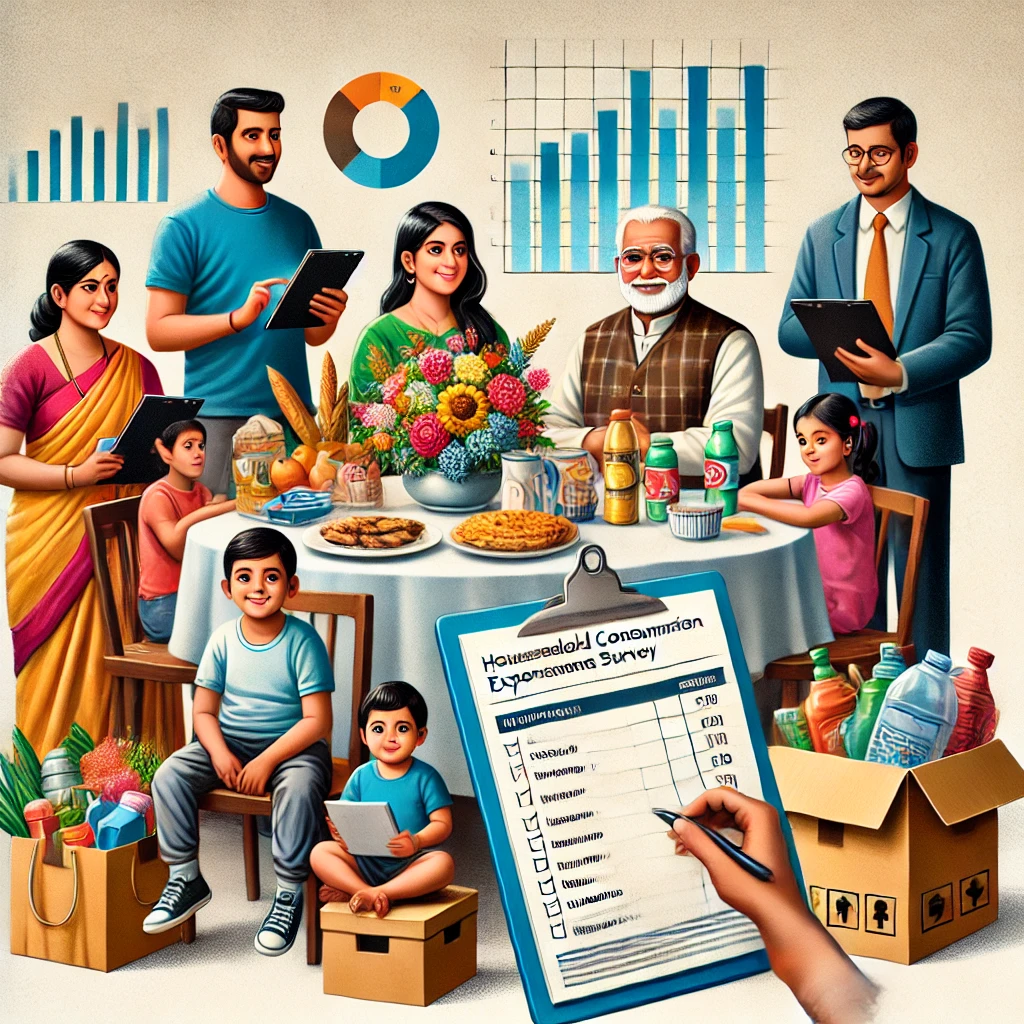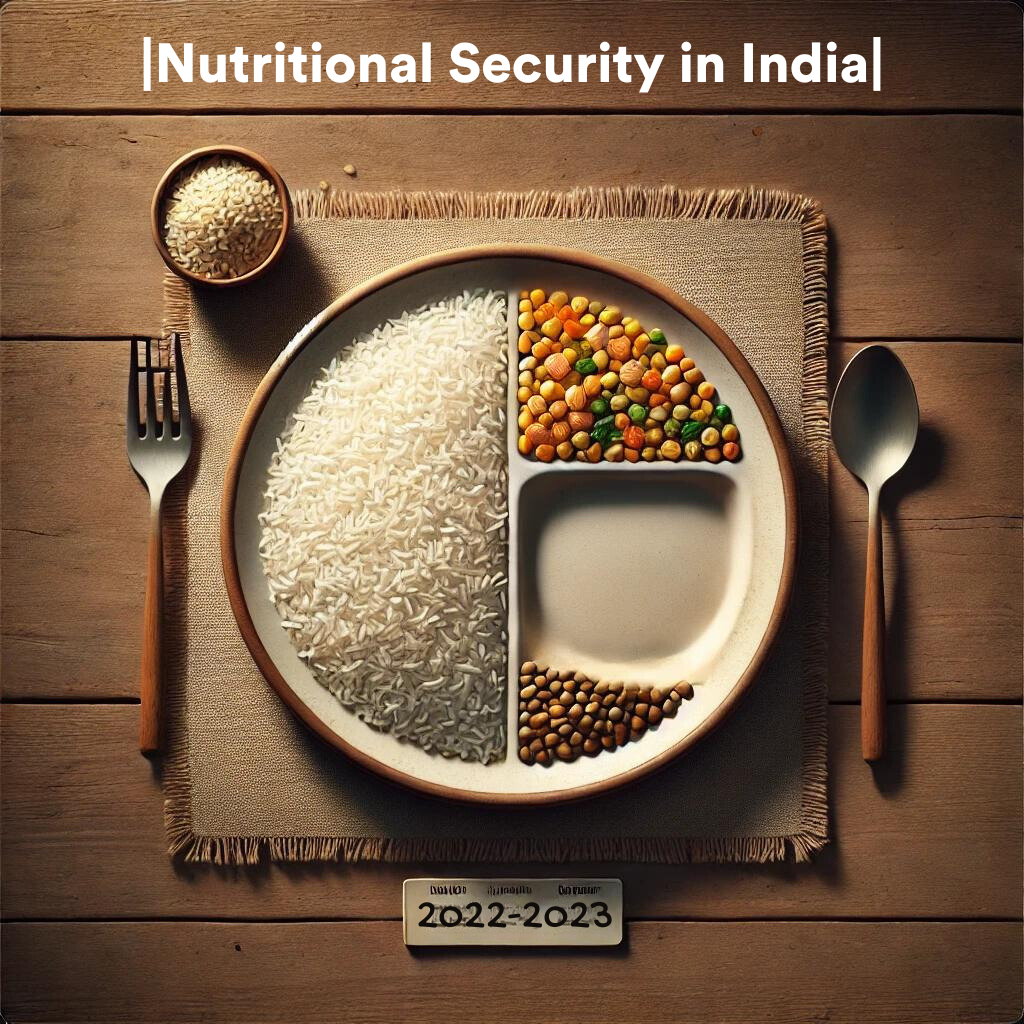The Household Consumption Expenditure Survey (HCES) by the National Statistical Office (NSO) reveals critical insights into India’s economic landscape. Conducted from August 2022 to July 2023, this survey provides vital data on how Indian households spend on various goods and services, aiding in the calculation of macroeconomic indicators like GDP and inflation rates. Notably, the survey indicates a significant reduction in poverty rates to 5%.
The HCES is conducted every five years to gather data on household spending patterns. The latest survey shows a significant increase in Monthly Per Capita Consumer Expenditure (MPCE) for both urban and rural households since 2011–12, reflecting changes in spending habits and economic conditions across India.

What is Household Consumption Expenditure Survey (HCES)?
The Household Consumption Expenditure Survey (HCES) is a critical instrument used by the Indian government to gather detailed data on household consumption patterns. Conducted by the National Statistical Office (NSO) every five years, this survey provides insights into the consumption of goods and services by households across the country.
Purpose and Conducting Body
The HCES is conducted by the National Statistical Office (NSO) with the primary objective of collecting detailed data on household consumption of goods and services. This survey, carried out every five years, helps in understanding the consumption behavior of households, which is crucial for economic planning and policy-making.
Utilization of Data
Data from the HCES is instrumental in deriving key macroeconomic indicators such as Gross Domestic Product (GDP), poverty rates, and Consumer Price Inflation (CPI). These indicators are essential for policymakers to gauge the economic health of the country and formulate policies aimed at improving living standards.
Previous Survey Data Issues
The issues cited included inconsistencies in the data, which led to the decision to withhold the results to ensure the reliability and accuracy of the information presented.
Insights of the HCES Survey 2022-2023
The recent Household Consumption Expenditure Survey, conducted from August 2022 to July 2023, has revealed significant insights into the consumption patterns of Indian households. These findings highlight changes in expenditure habits and provide a comprehensive view of economic conditions across urban and rural areas.
General Findings: The survey indicates a notable reduction in poverty and an increase in Monthly Per Capita Consumption Expenditure (MPCE). The findings show a distinct difference in consumption patterns between urban and rural households, with urban areas exhibiting higher MPCE and lower poverty rates compared to rural areas.
Monthly Per Capita Consumption Expenditure (MPCE): The survey reveals that the MPCE in urban households has increased by 33.5% since 2011–12, reaching ₹3,510, while rural MPCE saw a 40.42% rise to ₹2,008. Additionally, 46% of rural and 39% of urban household expenditures were on food items, reflecting the significant share of food in household budgets.
Distribution by Population Percentiles: The MPCE distribution shows that the bottom 5% of the rural population has an average MPCE of ₹1,373, while the same percentile in urban areas has ₹2,001. Conversely, the top 5% of the rural and urban populations have average MPCEs of ₹10,501 and ₹20,824, respectively, indicating significant income disparity.
State-wise MPCE Variations: Sikkim reported the highest MPCE in both rural (₹7,731) and urban areas (₹12,105), while Chhattisgarh had the lowest with ₹2,466 for rural and ₹4,483 for urban households. These figures highlight the significant regional variations in consumption expenditure across the states.
UT-wise MPCE Variations: Among Union Territories, Chandigarh had the highest MPCE with ₹7,467 in rural and ₹12,575 in urban areas. In contrast, Ladakh and Lakshadweep recorded the lowest MPCEs, reflecting disparities in consumption patterns across UTs.
Food Spending Trends: The survey shows a declining trend in the share of expenditure on food, with an increasing share of non-food items. This shift suggests rising incomes and greater spending on categories like medical, clothing, education, and conveyance, indicating changes in household priorities over the years.
Conclusion
In conclusion, the Household Consumption Expenditure Survey 2022-23 provides crucial insights into India’s economic landscape, revealing significant shifts in consumption patterns and income distribution. For UPSC aspirants, understanding these dynamics is essential for framing policies that aim at inclusive growth and poverty alleviation. Therefore, it underscores the importance of robust data for informed decision-making, a key aspect for future policymakers.


